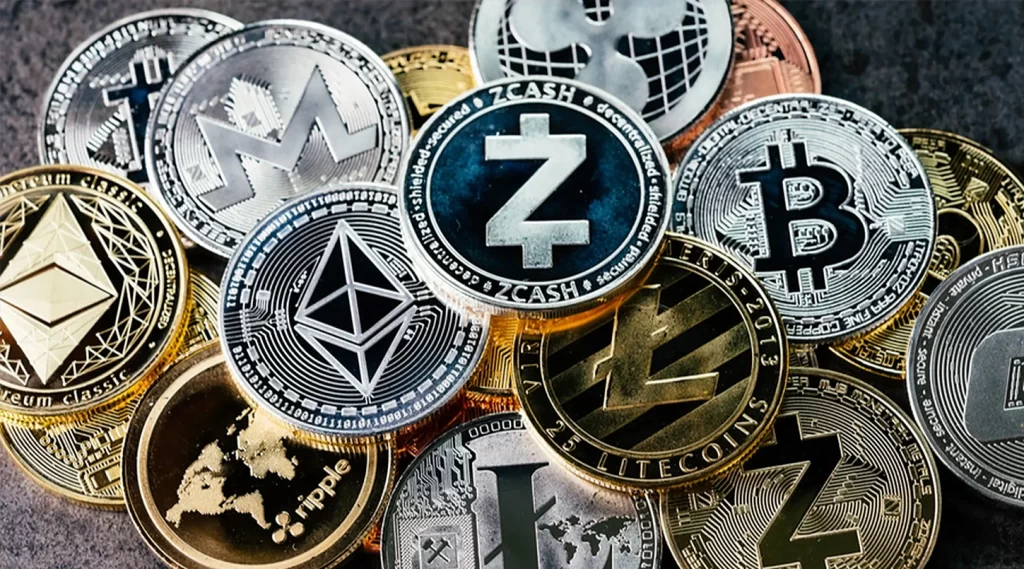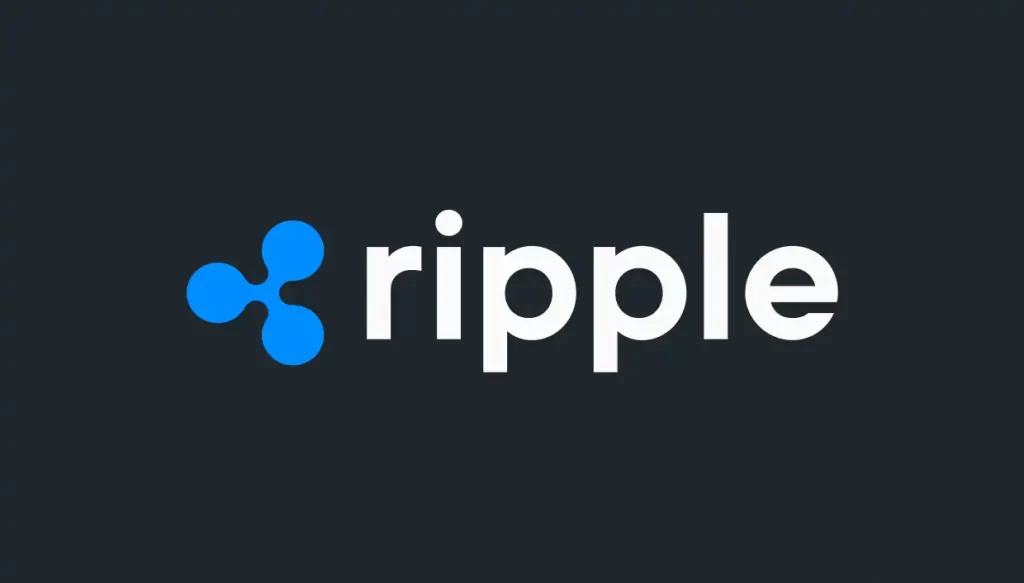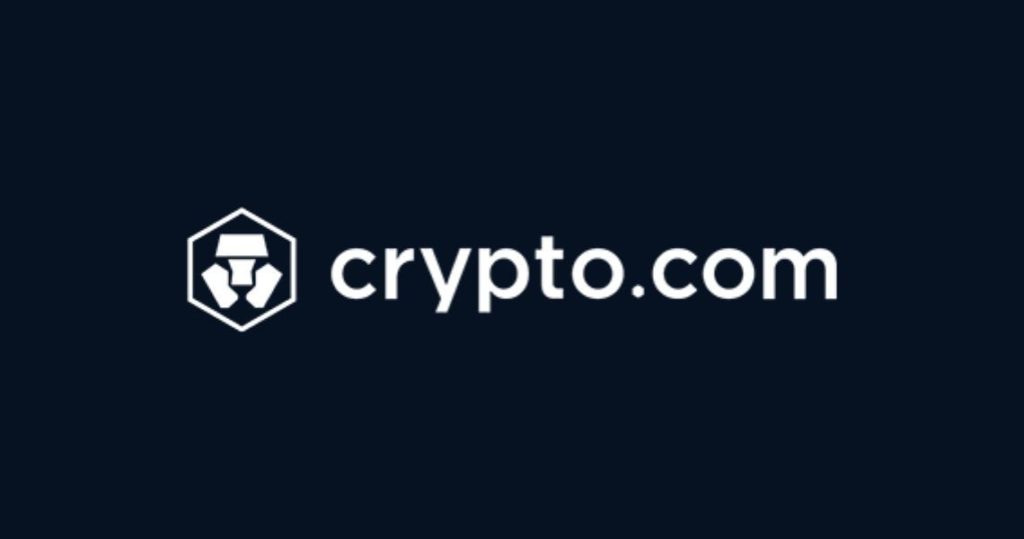Renzo Protocol’s EZETH token experienced a price depeg on April 24, briefly plummeting to $688 on Uniswap before stabilizing at its parity with Ether (ETH), Dexscreener data reveals.
This incident seems to have been triggered by a broader market sell-off following the conclusion of Renzo Protocol’s season 1 airdrop, as noted by pseudonymous crypto analyst Tommy in an April 24 post:
“The sell-off likely caused by the conclusion of Season 1 Airdrop, users want to get back $ETH to farm other [liquid restaking tokens] LRT/protocols.”
Renzo stands as the second-largest liquid restaking protocol, boasting a total value locked (TVL) surpassing $3.3 billion, marking a 126% increase over the past month.
Ether.fi leads with over $3.9 billion in TVL, according to DefiLlama.
These depegging incidents present a recurring challenge for liquid restaking tokens (LRTs), as highlighted by the analyst:
“On the depeg, it is a risk that we need to recognize for all LRTs, even if withdrawal is enabled, the DEX pool can still depeg simply based on the temporary imbalance.”
READ MORE: DAO Maker Faces Backlash Over Unfulfilled Compensation Promises Following $7M Hack
The depegging event triggered widespread liquidations on leveraged platforms like Gearbox and Morpho Labs, particularly affecting loopers, users leveraging LRTs repeatedly as collateral to borrow ETH, who bore the brunt of the losses.
Renzo Protocol garnered increased attention following the addition of its incoming token (REZ) to the Binance launch pool on April 23, coinciding with the announcement of its forthcoming airdrop, where 10% of token allocation was earmarked for season 1.
In the wake of Renzo’s depegging, crypto trader czsamsunsb.eth managed to profit significantly, earning 121.65 ETH, equivalent to over $396,000, within two hours.
According to on-chain intelligence firm Lookonchain:
“czsamsunsb.eth made 121.65 $ETH in just 2 hours after $EZETH (Renzo Restaked ETH) depegged! He spent 4,099 $ETH to buy 4,221 $EZETH successfully, making 121.65 $ETH!”
To submit a crypto press release (PR), send an email to sales@cryptointelligence.co.uk.
Homo Dogecoin (HODOGE) could turn early investors into multi-millionaires if it becomes a mainstream coin, like Shiba Inu (SHIB) and Dogecoin (DOGE).
Homo Dogecoin (HODOGE), a new Solana memecoin that was launched this week, is poised to explode over 8,000% in price in the coming days.
This is because HODOGE has announced its first centralized exchange listing, which will be on MEXC.
This will give the Solana memecoin exposure to millions of additional investors, who will pour funds into the coin and drive its price up.
Currently, Homo Dogecoin can only be purchased via Solana decentralized exchanges, like Jupiter and Raydium, and early investors stand to make huge returns in the coming days.
Early investors in SHIB and DOGE made astronomical returns, and Homo Dogecoin could become the next viral memecoin.
Homo Dogecoin launched with over $54,000 of locked liquidity, giving it a unique advantage over the majority of other new memecoins, and early investors could make huge gains.
To buy Homo Dogecoin on Raydium or Jupiter ahead of the MEXC listing, users need to connect their Solflare, MetaMask or Phantom wallet, and swap Solana for Homo Dogecoin by entering its contract address – DJZH5cyaQNzyRVVMEyvhNfGZm7x6JswKvtVAUw91syVR – in the receiving field.
In fact, early investors could make returns similar to those who invested in Shiba Inu (SHIB) and Dogecoin (DOGE) before these memecoins went viral and exploded in price.
If this happens, a new wave of memecoin millionaires could be created in a matter of weeks – or potentially even sooner.
The Solana memecoin craze continues amid larger memecoins, like Shiba Inu (SHIB), Dogecoin (DOGE) and DogWifHat (WIF) trading sideways in recent weeks and losing momentum.
This is why many SHIB, DOGE and WIF investors are instead investing in new Solana memecoins, like HODOGE.
Bitcoin miners are experiencing a significant revenue surge due to the rise in transaction fees from Bitcoin Runes, a novel protocol for issuing fungible tokens on the Bitcoin network, as stated by Nazar Khan, the co-founder and CEO of TeraWulf.
Khan emphasized the impact of Runes on transaction fees, noting, “Runes significantly increased the transaction fees, so if anything, there was an increase in the hash price in the first 24-30 hours [after halving].
Since then, we’ve seen transaction fees come down, but compared to the average fees in 2023, they’re still pretty high.”
Given that the remainder of the Bitcoin block reward is a fixed issuance, transaction fees serve as the variable element for Bitcoin miners, Khan explained.
This surge in transaction fees provides a crucial financial boost for miners following the Bitcoin halving, which reduced block rewards from 6.25 BTC to 3.125 BTC.
READ MORE: Robinhood Broadens Cryptocurrency Reach: New Yorkers Gain Access to SHIB, AVAX, and COMP Trading
Although total Bitcoin transaction fees decreased from their peak of 1,257 on April 20 to 105 BTC on April 25, they remained notably higher compared to most of 2023, according to CryptoQuant data.
On average, transaction fees constituted 30% of Bitcoin block rewards post-halving, translating to almost an additional Bitcoin for miners on top of the existing block rewards, Khan revealed.
In contrast, transaction fees comprised only 10% of Bitcoin block rewards in 2023.
TeraWulf estimated a post-halving Bitcoin production cost of $37,000 per BTC, assuming a 10% average transaction fee.
However, with the current higher average transaction fees, TeraWulf anticipates a further reduction in Bitcoin production cost, thereby enhancing its profitability, Khan suggested.
Despite the halving of block rewards, TeraWulf remains positioned for expansion as the eighth-largest Bitcoin mining firm, boasting a market capitalization exceeding $750 million, according to Companies Market Cap.
To submit a crypto press release (PR), send an email to sales@cryptointelligence.co.uk.
The Bitcoin Therapist, a well-known pseudonymous writer of a Bitcoin newsletter, recently recounted the serendipitous beginning of his cryptocurrency journey on X (formerly Twitter).
He described how a chance encounter with Bitcoin led him into the crypto world.
He began his crypto investments with Dogecoin, putting in a few thousand dollars.
To his surprise, the value of his investment tripled overnight.
After cashing out, he delved into researching Bitcoin and quickly became a firm believer in its potential.
“It took me a few days before it clicked,” he noted. Within a short span, he transitioned all his investments to Bitcoin, eventually going “100% all in on Bitcoin.”
Despite his early exit from Dogecoin, which later surged by 40 times, The Bitcoin Therapist expressed gratitude for his initial foray into cryptocurrencies, acknowledging the significant gains he made.
This experience starkly contrasted with the fate of many newcomers who lose their entire investment, commonly referred to in crypto slang as getting “REKT.”
READ MORE:Cryptocurrency Users Settle with Ex-FTX CEO Sam Bankman-Fried in Class-Action Lawsuit
Reflecting on his journey, he stated, “Ironic, but true. I haven’t touched anything but Bitcoin since and I don’t intend to.”
Over the past three and a half years, Bitcoin has seen a price increase of 270%, while Dogecoin has astonishingly risen by 4,670%. This dramatic growth underscores the volatile and unpredictable nature of cryptocurrencies.
The narrative shared by The Bitcoin Therapist highlights the capricious paths to success within the cryptocurrency landscape, serving as a powerful reminder of the potential for financial transformation through fortuitous events.
He learned that chasing quick profits through lesser-known “meme coins” was less important than pursuing lasting financial independence through Bitcoin, which he valued for its rarity and potential as a liberating financial tool.
The Bitcoin Therapist has spent a year immersed in learning about various aspects of the crypto industry, gaining a deep understanding of the space.
His story emphasizes the importance of education and strategic investment in achieving financial freedom.
The broader implications of meme coins and Bitcoin’s role as a mainstream asset class are poised to be key discussion points at the upcoming Benzinga Future of Digital Assets event on November 19, where such expert insights will further illuminate the evolving dynamics of the cryptocurrency market.
To submit a crypto press release (PR), send an email to sales@cryptointelligence.co.uk.
Oil Cat (OILCAT) could become a viral memecoin, like Shiba Inu (SHIB) and Dogecoin (DOGE).
Oil Cat (OILCAT), a Solana memecoin that was launched today, is aiming to challenge other memecoin giants, such as Shiba Inu (SHIB) and Dogecoin (DOGE).
Early investors in SHIB and DOGE made astronomical returns, and Oil Cat presents a similar opportunity.
Oil Cat has a market cap below $10,000 at the moment, meaning that when it just reaches a modest market cap of $200,000-$500,000, early investors would generate returns of 2,000%-5,000% in a matter of days or hours.
The exciting memecoin is poised to rally 9,000% in the coming two days, and Oil Cat could potentially reach a multi-million dollar market cap within a few weeks.
Currently, Oil Cat can only be purchased via Solana decentralized exchanges, like Jupiter and Raydium, and early investors stand to make huge returns in the coming days.
To buy Oil Cat on these platforms, users need to connect their Solflare, MetaMask or Phantom wallet, and swap Solana for Oil Cat by entering its contract address – 5fLTC6oPan3c2cybx4fvyzGWEYiqu4J3Q8KxJ46Zwbpd – in the receiving field.
In fact, early investors could make returns similar to those who invested in Shiba Inu (SHIB) and Dogecoin (DOGE) before these memecoins went viral and exploded in price.
If this happens, a new wave of memecoin millionaires could be created in a matter of weeks – or potentially even sooner.
The Solana memecoin craze continues amid larger memecoins, like Shiba Inu (SHIB), Dogecoin (DOGE) and DogWifHat (WIF) trading sideways in recent weeks and losing momentum.
This is why many SHIB, DOGE, and WIF investors are instead investing in new Solana memecoins, like OILCAT.
AI Shiba Coin (AISHIBC) could become a viral memecoin, like Shiba Inu (SHIB) and Dogecoin (DOGE).
AI Shiba Coin (AISHIBC), a Solana memecoin that was launched today, is aiming to challenge other memecoin giants, such as Shiba Inu (SHIB) and Dogecoin (DOGE).
Early investors in SHIB and DOGE made astronomical returns, and AI Shiba Coin presents a similar opportunity.
AI Shiba Coin has market cap below $10,000 at the moment, meaning that when it just reaches a modest market cap of $200,000-$500,000, early investors would generate returns of 2,000%-5,000% in a matter of days or hours.
The exciting memecoin is poised to rally 8,300% in the coming two days, and AI Shiba Coin could potentially reach a multi-million dollar market cap within a few weeks.
Currently, AI Shiba Coin can only be purchased via Solana decentralized exchanges, like Jupiter and Raydium, and early investors stand to make huge returns in the coming days.
To buy AI Shiba Coin on these platforms, users need to connect their Solflare, MetaMask or Phantom wallet, and swap Solana for AI Shiba Coin by entering its contract address – BHKw9yYrRnqfGM72hN4N9NLqXcJ6MRfbX48G2VfyURqx – in the receiving field.
In fact, early investors could make returns similar to those who invested in Shiba Inu (SHIB) and Dogecoin (DOGE) before these memecoins went viral and exploded in price.
If this happens, a new wave of memecoin millionaires could be created in a matter of weeks – or potentially even sooner.
The Solana memecoin craze continues amid larger memecoins, like Shiba Inu (SHIB), Dogecoin (DOGE) and DogWifHat (WIF) trading sideways in recent weeks and losing momentum.
This is why many SHIB, DOGE and WIF investors are instead investing in new Solana memecoins, like AISHIBC.
Homer on Solana (HOMSOL) could turn early investors into multi-millionaires if it becomes a mainstream coin, like Shiba Inu (SHIB) and Dogecoin (DOGE).
Homer on Solana (HOMSOL), a new Solana memecoin that was launched today, is poised to explode over 8,000% in price in the coming days.
This is because HOMSOL has announced its first centralized exchange listing, which will be on MEXC.
This will give the Solana memecoin exposure to millions of additional investors, who will pour funds into the coin and drive its price up.
Currently, Homer on Solana can only be purchased via Solana decentralized exchanges, like Jupiter and Raydium, and early investors stand to make huge returns in the coming days.
Early investors in SHIB and DOGE made astronomical returns, and Homer on Solana could become the next viral memecoin.
To buy Homer on Solana on Raydium or Jupiter ahead of the MEXC listing, users need to connect their Solflare, MetaMask or Phantom wallet, and swap SOL for Homer on Solana by entering its contract address – 3FfVJSBVgWptopDgtMqsNWPQbzDBt6VHqM1Y2SMMNL95 – in the receiving field.
In fact, early investors could make returns similar to those who invested in Shiba Inu (SHIB) and Dogecoin (DOGE) before these memecoins went viral and exploded in price.
If this happens, a new wave of memecoin millionaires could be created in a matter of weeks – or potentially even sooner.
The Solana memecoin craze continues amid larger memecoins, like Shiba Inu (SHIB), Dogecoin (DOGE) and DogWifHat (WIF) trading sideways in recent weeks and losing momentum.
This is why many SHIB, DOGE and WIF investors are instead investing in new Solana memecoins, like HOMSOL.
In a significant legal development, Ripple Labs has vigorously challenged the U.S. Securities and Exchange Commission’s (SEC) proposal for a nearly $2 billion fine against the blockchain-based payment protocol company.
The legal dispute stems from the SEC’s assertion that Ripple should face a substantial financial penalty, to which Ripple has responded by suggesting a more reasonable figure of no more than $10 million.
This legal contention surfaced in a recent court filing where Ripple Labs firmly opposed the SEC’s plea to a federal judge.
The blockchain giant argued against the imposition of the suggested penalties, which include an injunction, disgorgement of funds, and pre-judgment interest.
The submission emphasized Ripple’s commitment to regulatory compliance and criticized the SEC’s demands as overly severe, lacking both legal and principled foundations.
The filing elaborated on the SEC’s breakdown of the proposed fines, totaling nearly $2 billion, comprising $876 million in disgorgement, an additional $876 million in civil penalties, and $198 million in pre-judgment interest.
Ripple decried these figures as excessive and not reflective of their actual business revenues, though specific revenue details were redacted from the document.
The timing of these legal maneuvers was highlighted by Ripple Labs’ Chief Legal Officer, Stuart Alderoty, who, on March 25, disclosed the SEC’s punitive measures against Ripple.
READ MORE: President Biden Signs Bill Expanding Surveillance Powers, Sparking Privacy Concerns
Alderoty criticized the SEC’s persistent efforts to not only penalize Ripple but to cast a shadow over the broader cryptocurrency sector.
He described the SEC’s actions as an ongoing attempt to intimidate the industry throughout the U.S.
Moreover, Ripple’s filing presented a case for a more proportionate financial penalty.
It argued that a $10 million fine would be more aligned with fines levied in similar cases involving digital assets, where there was no evidence of intentional wrongdoing or significant harm or risk to others.
Alderoty also commented on the broader implications of the SEC’s aggressive stance, suggesting it represented a concerted effort to intimidate the entire crypto community in the U.S.
He remained hopeful, however, that the judge would consider the merits of Ripple’s arguments favorably during the final remedies phase of the case, particularly noting Ripple’s victories on several key issues in the proceedings.
To submit a crypto press release (PR), send an email to sales@cryptointelligence.co.uk.
Crypto.com, a Singapore-based cryptocurrency exchange, has delayed its planned expansion into South Korea following concerns raised by local regulators about potential money laundering activities.
The South Korean authorities, after reviewing the data submitted by Crypto.com, initiated an “emergency on-site inspection” due to Anti-Money Laundering (AML) issues identified.
A representative from the Financial Services Commission (FSC) conveyed the regulatory concerns to the media, stating, “We found concerns related to the prevention of money laundering activities in the submitted materials.”
The inspection by the Financial Intelligence Unit (FIU), which is part of the FSC, started on April 23, a few days before the exchange’s intended launch date in South Korea.
This proactive regulatory action underscores the stringent oversight in the South Korean financial sector, particularly concerning AML protocols.
Prior to these developments, Crypto.com had successfully obtained a virtual asset business license (VASP) in South Korea by acquiring a local cryptocurrency exchange, OKBit.
This was part of the platform’s efforts to penetrate the South Korean market, which is known for its tough regulatory environment for international exchanges.
Responding to the regulatory intervention, a spokesperson from Crypto.com announced the postponement of their launch originally scheduled for April 29.
The company expressed its commitment to compliance and cooperation with South Korean regulators: “Korea is a difficult market for international exchanges to enter, but we are committed to working with regulators to advance the industry responsibly for Koreans.”
READ MORE: As PEPE Leads, DOGE Accelerates, a New Player is Steering Toward Success
They also emphasized the intention to use the delay to ensure that Korean regulators are fully aware of Crypto.com’s AML measures, stating, “We will postpone our launch and take this opportunity to make sure Korean regulators understand our thorough policies, procedures, systems, and controls.”
Furthermore, South Korean financial authorities are taking additional steps to strengthen market integrity by planning to impose restrictions on the listing of digital assets associated with hacking incidents unless the root causes are clearly identified.
New regulatory guidelines will also demand that all foreign digital assets seeking listing in South Korea must publish a white paper or technical manual specifically for the local market.
However, tokens that have been listed on a licensed exchange for more than two years might be exempt from these new requirements.
The Financial Supervisory Service has been active in shaping these guidelines since late 2023, collaborating with stakeholders like the Digital Asset Exchange Association to ensure comprehensive regulatory frameworks that enhance transparency and protect investors.
Token issuers failing to disclose essential information risk being delisted from exchanges, reinforcing the country’s commitment to stringent regulatory oversight.
To submit a crypto press release (PR), send an email to sales@cryptointelligence.co.uk.
The pervasive influence of venture capitalists (VCs) on newly-launched cryptocurrencies is considered detrimental to their long-term sustainability and market performance, despite the initial liquidity they bring.
According to a popular crypto analyst known as Route 2 FI, in an April 22 Substack post, he criticized the role of VCs and the process of permissionless token listing:
“Permissionless token listing and money-hungry VCs are bad for the individual token long term. Every year 100 new tokens launch.
“Diluting existing ones. It’s now April 2024, and inflows into altcoins seem way more selective and not enough to offset big unlocks.”
He further highlighted the problem with high fully diluted valuations (FDV) in token launches, which are appealing for early adopters due to potential large airdrops but are marred by the substantial unlocking schedules for early VC investors.
These schedules often lead to significant price drops as the market cannot sustain the inflated initial valuations. Route 2 FI expressed skepticism about the viability of such investments:
“I think most new VC scam coins (high FDV coins) eventually will dump hard AF. And that you can use this to your advantage in pair trading or in situations where you want to hedge.”
The total market cap of altcoins, excluding Bitcoin, had risen significantly by 38% year-to-date to $1.05 trillion, as per TradingView data.
Nonetheless, this growth is overshadowed by the potential risks associated with large VC unlocks.
The lack of sufficient demand to absorb the increased circulating supply results in downward pressure on prices.
READ MORE: President Biden Signs Bill Expanding Surveillance Powers, Sparking Privacy Concerns
This scenario is exacerbated by the potential exit of early buyers and developers, diminishing community trust and reducing total value locked (TVL) in the protocols, as Route 2 FI elaborated:
“At some point, the supply will outnumber the demand and we will start spiraling downwards due to massive inflation.
“Early buyers will get trapped, which leads to bearish sentiment among the community, reduced TVL in the protocol, devs (if any) leaving for greener fields, and team members quitting.”
In the broader context, the notion of an “altseason,” where altcoins surge following Bitcoin’s peaks, might be changing.
Despite over 300 noteworthy projects, the lack of enough liquidity could signal the end of this recurrent trend. Route 2 FI reflected on the new market dynamics:
“We hear a lot about altseason, but this time around I think things will be different… But ask yourself who is going to buy all these tokens.
“Unless institutions or retail are coming in masses, it will just be a forever PvP fight.”
To submit a crypto press release (PR), send an email to sales@cryptointelligence.co.uk.











